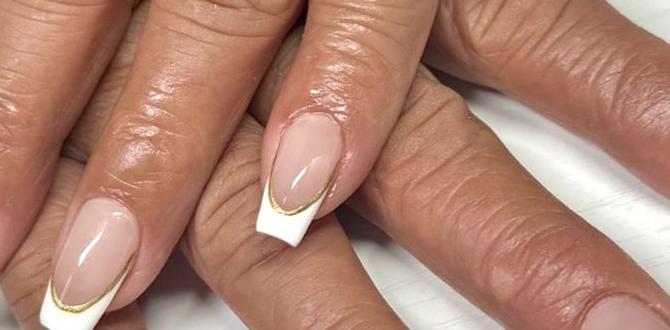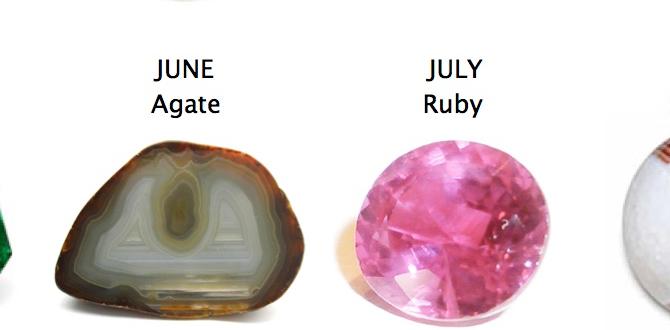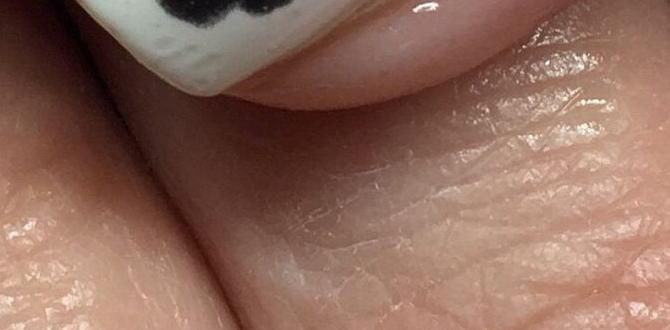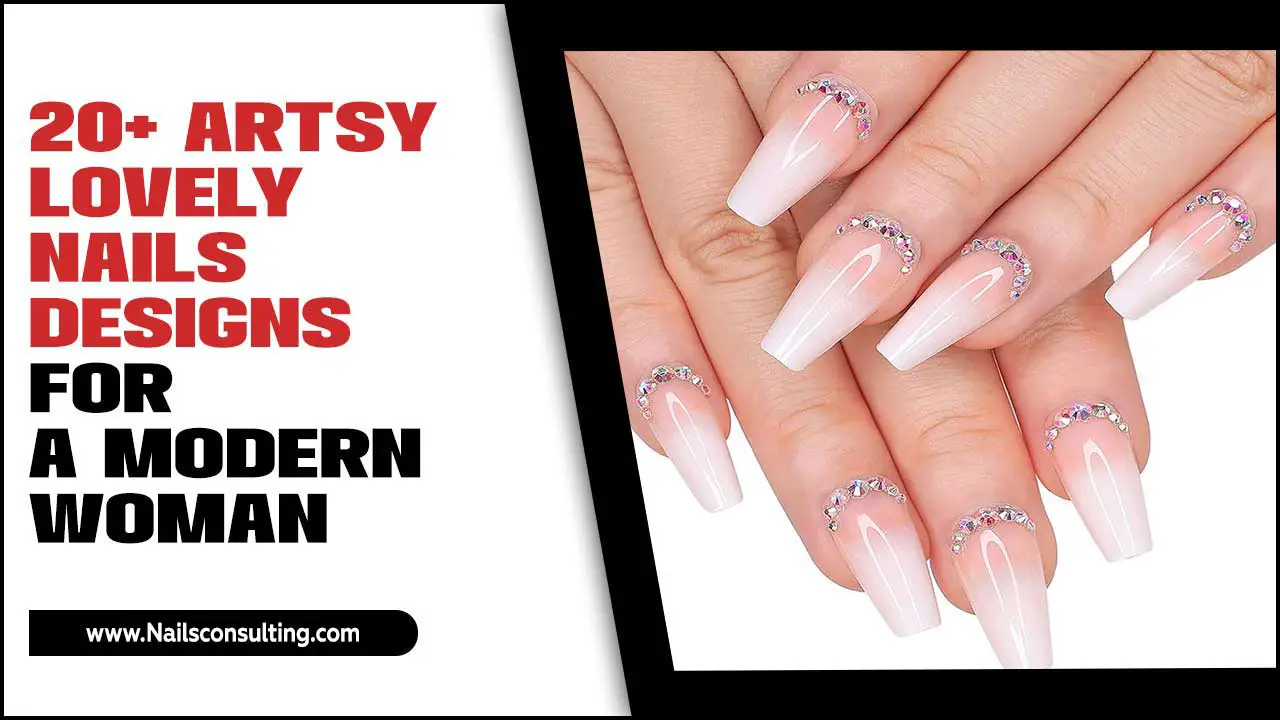Ready to rock a groovy, retro vibe? Tie-dye nails are a fun, vibrant way to express your style! Whether you’re a beginner or a pro, this guide unlocks stunning tie-dye nail design ideas, essential tips, and easy-to-follow steps for achieving this iconic look that’s totally essential for your nail art repertoire.
Remember those colorful, swirling patterns from the 60s and 70s? Tie-dye is making a major comeback, and it’s looking fabulous on our nails! If you’ve ever looked at a tie-dye shirt and thought, “I wish my nails could look that cool,” then you’re in the right place. Sometimes, getting that perfect blend of colors can seem tricky, and you might worry about making a mess. But don’t fret! Creating stunning tie-dye effect nails is totally achievable, even if you’re just starting out. We’re going to break it down with simple steps and inspiring ideas so you can create your own wearable art. Get ready to unleash your inner artist and make your fingertips the coolest they’ve ever been!
What is Tie Dye Nail Art?
Tie-dye nail art is a manicure technique that mimics the vibrant, swirling, and abstract patterns of traditional tie-dye fabric. Instead of fabric dyes, we use nail polish to create these organic color blends on the nails. The magic lies in how different colors are layered, dripped, or swirled together to achieve that signature, mesmerizing look. It’s all about embracing a little bit of happy chaos and letting the colors mingle to create unique designs. Think of it as painting with liquid rainbows on your fingertips!
Why Tie Dye Nails Are a Must-Try
Tie-dye nails are more than just a trend; they’re a statement of fun, freedom, and vibrant self-expression. Here’s why you absolutely need to try this style:
- Unmatched Vibrancy: Tie-dye brings an explosion of color to any look, instantly brightening your mood and your style.
- Endlessly Unique: No two tie-dye nails are ever exactly alike! Each swirl and blend is a one-of-a-kind masterpiece.
- Retro Charm with a Modern Twist: It’s a nod to nostalgic aesthetics that feels fresh and relevant today.
- Versatile Styles: From subtle pastels to bold neons, tie-dye can be adapted to suit any personal taste or occasion.
- Surprisingly Easy to DIY: With a few basic techniques, you can achieve gorgeous tie-dye effects at home without being a professional nail artist.
Essential Tools and Materials You’ll Need
Before we dive into the fun designs, let’s gather your nail art toolkit. Having the right supplies makes the process so much smoother and the results even better!
- Base Coat: To protect your natural nails and help polish adhere.
- Top Coat: To seal your design, add shine, and prevent chipping.
- Nail Polishes in Your Chosen Colors: Pick 2-4 complementary or contrasting colors for your tie-dye effect.
- White Nail Polish: Often used as a base for brighter tie-dye colors to pop.
- Clear Nail Polish or Nail Art Medium: This helps the colors blend together beautifully without drying too quickly.
- Dotting Tool, Toothpick, or Thin Nail Art Brush: For creating swirls and details.
- Sponge (Makeup Sponge or Cosmetic Sponge): A key tool for creating the classic mottled tie-dye effect by dabbing.
- Clean-up Brush or Cotton Swab: For tidying up any polish on your skin.
- Rubbing Alcohol or Nail Polish Remover: For cleaning up mistakes.
- Optional: Rhinestones, Glitter, Stickers: To add extra flair!
Beginner-Friendly Tie Dye Nail Techniques
Don’t be intimidated! These techniques are designed for ease and fantastic results. We’ll focus on methods that give you that signature tie-dye look with minimal fuss.
Technique 1: The Sponge-Dabbing Method
This is one of the easiest and most popular ways to achieve a tie-dye effect. It’s all about creating a soft, blended look.
What you’ll need: Base coat, white polish (optional), 2-4 nail polish colors, a makeup sponge, top coat.
- Prep Your Nails: Start with clean, dry nails. Apply a base coat and let it dry completely. For vibrant colors, apply one or two coats of white nail polish as a base and let it dry. This makes your tie-dye colors really stand out.
- Prepare the Sponge: Cut a makeup sponge into smaller pieces (about 1-inch squares work well). You can reuse these pieces a few times if you clean them gently. Lightly dampen the sponge with water (this helps prevent it from absorbing too much polish) and squeeze out the excess.
- Apply Polish to the Sponge: Working quickly on a piece of paper or a palette, apply stripes or dots of your chosen colored nail polishes directly onto the sponge. Alternate the colors. You can add a little clear polish on top of the colors on the sponge if you want them to blend even more seamlessly, but this isn’t strictly necessary for a beginner.
- Dab onto Your Nail: Gently press the sponge onto your nail, dabbing it multiple times. Don’t press too hard or too long. The goal is to transfer the colors and create a gradient effect. Lift the sponge and reapply polish to the sponge as needed for each nail, or for touch-ups on the same nail.
- Let it Dry and Seal: Allow the polish to dry for a couple of minutes. Then, carefully apply a top coat to seal in the design and give it a smooth, glossy finish. Applying the top coat can also help further blend any harsh lines.
- Clean Up: Use a clean-up brush dipped in nail polish remover to tidy up any polish that got onto your skin.
Technique 2: The Swirl-and-Drag Method
This technique offers a bit more control and allows for more defined, swirling patterns.
What you’ll need: Base coat, 2-4 nail polish colors, clear polish or nail art medium, a dotting tool or toothpick, top coat.
- Prep and Base: Apply base coat and let it dry. For this method, applying a solid color base (like white, neon, or even black for a dramatic look) can be a good starting point, but it’s not always necessary. Let it dry.
- Apply Base Colors: Paint your nail with one of your chosen colors. While it’s still wet, carefully place dots or thin lines of your other tie-dye colors onto the wet polish. You want to do this quickly so the colors have a chance to meld.
- Swirl with a Tool: Immediately take your dotting tool, toothpick, or a fine nail art brush. Dip it into a bit of clear polish or nail art medium (this helps the swirl tool glide and prevents it from dragging the colors too much). Then, gently drag the tool through the dots and lines you just placed. Make swirling motions, figure-eights, or simple chaotic drags. Avoid over-swirling, which can muddy the colors.
- Dry and Seal: Let the design dry for a few minutes. Apply a top coat to smooth the surface and protect your beautiful swirls.
- Clean Up: Clean up any stray polish from the surrounding skin with your clean-up brush.
Technique 3: The “Droplet” Method
This method is super simple and great for tiny, scattered tie-dye effects or for adding accents.
What you’ll need: Base coat, 2-3 nail polish colors, a toothpick or dotting tool, top coat.
- Prep: Apply base coat and let it dry. You can use a colored base or clear.
- Drop Colors: Using your toothpick or dotting tool, pick up a small amount of one nail polish color and carefully “drop” it onto your nail. Repeat with your other colors, placing small droplets next to or slightly overlapping the first.
- Blend Gently: Use the tip of your toothpick or dotting tool to gently nudge and blend the edges of the droplets together. You’re not aiming for big swirls here, but more of a watercolor-like spread where the droplets meet.
- Dry and Seal: Let it dry and then apply your favorite shiny top coat.
Stunning Tie Dye Nail Design Ideas
Now for the creative part! Let’s explore some incredibly chic tie-dye nail design ideas to inspire your next manicure.
Classic Rainbow Tie Dye
This is the quintessential tie-dye look. Think bright reds, oranges, yellows, greens, blues, and purples blended in a psychedelic swirl. It’s bold, cheerful, and always a head-turner.
- Colors: Red, orange, yellow, green, blue, purple.
- Technique: Sponge-dabbing works best here to get a seamless blend. You can also do the swirl-and-drag method with thin lines of each color.
Pastel Dream Tie Dye
For a softer, more ethereal vibe, opt for pastels. Think baby pink, soft lavender, mint green, and sky blue. This is perfect for spring, summer, or whenever you want a gentle pop of color.
- Colors: Pastel pink, lavender, mint, baby blue, pale yellow.
- Technique: The sponge-dabbing method is ideal for creating a delicate, blended pastel look.
Neon Pop Tie Dye
Turn up the volume with neon shades! Think electric pink, lime green, bright orange, and fluorescent blue. This is for the bold and the brave, perfect for festivals or summer parties.
- Colors: Neon pink, neon green, neon orange, neon yellow, electric blue.
- Technique: Sponge-dabbing is great for intense color bursts. A white base coat is almost essential here to make the neons truly glow.
Monochromatic Tie Dye
Love a single color family? Try a monochromatic tie-dye! Use different shades of the same color, like various blues from navy to sky blue, or deep reds fading into pink. This offers a sophisticated take on the trend.
- Colors: Shades of blue (navy, royal, sky, cyan), shades of pink (fuchsia, magenta, rose, pale pink), or shades of green.
- Technique: Both sponge and swirl methods work well, as the color consistency helps blend.
“Blackout” Tie Dye
Add some edge to your tie-dye! Start with a black base coat, then use the sponge or swirl method with your chosen colors. The black base makes the colors pop dramatically and adds a grunge-inspired feel.
- Colors: Any! Brights, neons, or even jewel tones look stunning against black.
- Technique: Sponge-dabbing for soft blends or swirl-and-drag for more graphic elements.
Grayscale Tie Dye
A chic, minimalist interpretation. Use shades of gray, from charcoal to light silver, mixed with white. This is a surprisingly sophisticated and modern take on tie-dye that goes with absolutely everything.
- Colors: Black, charcoal gray, medium gray, light gray, white.
- Technique: Sponge-dabbing creates a classic gradient.
Jewel Tone Tie Dye
For a luxurious and deep look, embrace jewel tones. Think emerald green, sapphire blue, amethyst purple, and ruby red. These rich colors create a stunning, almost stained-glass effect.
- Colors: Emerald green, sapphire blue, amethyst purple, ruby red, deep teal.
- Technique: The swirl-and-drag method can create beautiful, defined patterns with these rich colors.
“Water Marble” Inspired Tie Dye
While a true water marble is different, you can create a tie-dye effect by carefully dripping colors into a cup of water (nail polish water marbling technique) and then transferring that pattern to your nail. This results in intricate, organic swirls.
- Colors: Any combination works.
- Technique: Water marbling technique. Note: This requires a separate technique and often more practice. Search for “nail water marbling tutorial” for step-by-step guides!
Tips for Achieving Perfect Tie Dye Nails
Even with simple techniques, a few pro tips can elevate your tie-dye nail game:
- Work Quickly: Nail polish dries fast! Have all your colors and tools ready before you start applying them to your nail or sponge.
- Don’t Over-Blend: For the classic tie-dye look, you want distinct color areas that bleed into each other, not a muddy, uniform color. Less is often more with blending.
- Use Thin Coats: Especially when sponging, apply light pressure. Too much pressure can push the polish underneath and create a messy look.
- Clean Up as You Go: It’s much easier to clean up small mistakes with a fine brush and remover than to fix a big smudge later.
- Let Layers Dry: Ensure each application step (base coat, white base, sponge layer) is dry before moving to the next to prevent accidental smudging.
- Seal with Shine: A good quality, thick top coat is your best friend. It smooths out any texture from the sponge or polish and makes the colors pop.
- Experiment with Color Combos: Don’t be afraid to mix and match. Look at color palettes online or in nature for inspiration.
Maintaining Your Tie Dye Manicure
To keep your groovy tie-dye nails looking their best:
- Reapply Top Coat: Every 2-3 days, a fresh layer of top coat can help prevent chipping and maintain shine.
- Moisturize: Keep your cuticles and hands hydrated with a cuticle oil or hand cream. Healthy skin makes your nails look even better.
- Be Gentle: Avoid using your nails as tools (like to scrape or pry). This can damage the polish and your natural nail.
- Wear Gloves: When doing household chores, especially with water or cleaning chemicals, wear rubber gloves to protect your manicure.
Tie Dye Nail Art vs. Water Marble Nail Art
While both techniques result in swirled, organic patterns, they are quite different in execution and outcome. Understanding these differences can help you choose the right technique for the look you want.
| Feature | Tie Dye Nail Art | Water Marble Nail Art |
|---|---|---|
| Primary Technique | Applying polish directly onto the nail via sponging, swirling, or dripping tools. | Dropping nail polish into a water surface, manipulating the pattern, and dipping the nail into it. |
| Color Blending | Colors blend on the sponge or directly on the nail. Can be more controlled or naturally mottled. | Colors create intricate, thin, swirling patterns as they interact on the water surface. Very organic and flowing. |
| Ease for Beginners | Generally easier for beginners, especially the sponge method. More forgiving mistakes. | Can be challenging for beginners; requires practice and specific polish types. Can be messy. |
| Tools Used | Sponges, toothpicks, dotting tools, brushes. | Cup of water, toothpicks, eye dropper (optional), masking tape around the finger. |
| Typical Look | Bold, vibrant color blocks that blend; mottled or swirled appearance. | Delicate, thin, intricate, and complex swirling patterns; often looks like a marbled stone or fabric. |
| Color Intensity | Can be very vibrant, especially with a white base. | Can appear slightly less intense as the polish is diluted by water and spreads thinly. |
Frequently Asked Questions About Tie Dye Nails
Q1: Do I need a special nail polish for tie-dye nails?
A1: Not necessarily! Most standard nail polishes work well. However, polishes that are a bit more pigmented or have a good flow tend to give the best results. For sponging, you want polishes that aren’t too thick or too thin.
Q2: My colors are turning muddy. How can I prevent this?
A2: Muddy colors often happen when you over-blend or when the colors are too close on the color wheel (like red and orange blended too much without a distinct separation). Try




